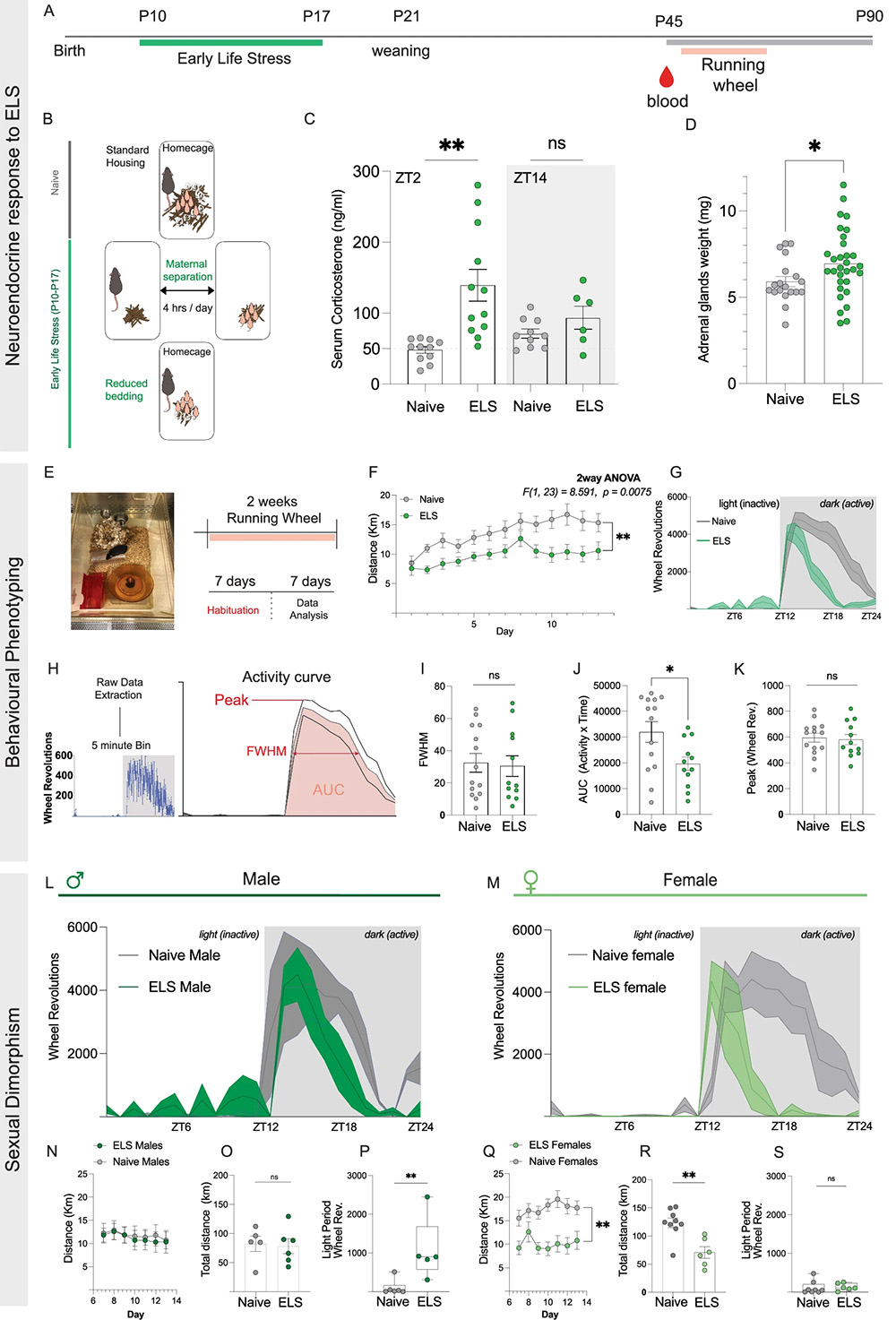
 中央研究院 生物化學研究所
中央研究院 生物化學研究所
The lateral hypothalamus is a brain region that regulates activity levels, circadian, and motivated behaviour. While disruption of these behaviours forms a hallmark of stress-related neuropsychiatric disorders, the underlying cellular mechanisms of how stress affects this brain region remain poorly understood. Here, we report that the effects of stress on behavioural activity levels correlate with spontaneous firing of orexin neurons, inducing hyperactivity in males and hypoactivity in female mice. These neuronal changes are accompanied by astrocyte remodelling, with causal manipulations identifying lateral hypothalamic astrocytes as key regulators of neuronal firing and physical activity patterns. In the context of stress, sex-specific changes in orexin neuron firing were driven by distinct astrocytic mechanisms with elevated purinergic signaling in male mice and reduced extracellular L-lactate in female mice. Finally, we show that genetic deletion of glucocorticoid receptors in lateral hypothalamic astrocytes restores key aspects of astrocyte morphology, rescues the effects of stress on orexin neuron firing, and recovers activity levels in both males and females. Overall, these data causally implicate astrocytes in the regulation of orexin neuron firing, behavioural activity patterns, and reveal that astrocytes are primary drivers of stress-induced behavioural change.
